“The Cloud” was one of the biggest tech buzzwords of 2016. But what exactly is the cloud? All this really means is that we’re moving away from storing our data on our local systems, instead keeping it online. This means that our digital lives are now becoming device independent. As long as you’re logged in, you’ve got access to all your media, documents, and files at the touch of a button.
With our devices now faster than ever, we expect things to load immediately. Gone are the days where we’d have to wait minutes for a simple image to load over dial up. Everything is transferred in the background, so no user interaction is needed on our part to facilitate communication between remote servers and our local PCs.
The backbone of this technology is our internet. Without adequate bandwidth, almost every part of our computer will run more slowly. Even the Notes app on our phone requires an active internet connection. When it comes to getting a fast internet connection, one of the most important components is our modem. Since our cable provider gives us a modem for free, we often neglect to think about how essential a good modem is for having a good connection.
The Netgear CM1000 is being marketed as the fastest cable modem on the market. But just how fast is it? And will standard users see any benefit from upgrading to this high speed technology? Or is this all marketing? We went hands on to see how this modem performs. We’ll show you the real world results, and help you understand if this is a piece of technology that you should have in your home.
First Look
Netgear went with the same styling they use for their other high end networking gear, with a few key updates. The edges are angled a little more sharply, giving it an aggressive, high performance look. The indicator panel on the front is made from a shiny aluminum, with the hidden green LEDs providing a subtle but functional way to get a quick update on your network status.
The back of the modem is much simpler. You’ve got your LAN port, which connects the modem to your router. Below that is the coaxial port, tying your home network into the grid. Finally, you’ve got a power button, reset button, and power supply jack. This is nothing out of the ordinary for a modem, but once you turn it on you’ll see how much power this modem has to offer.
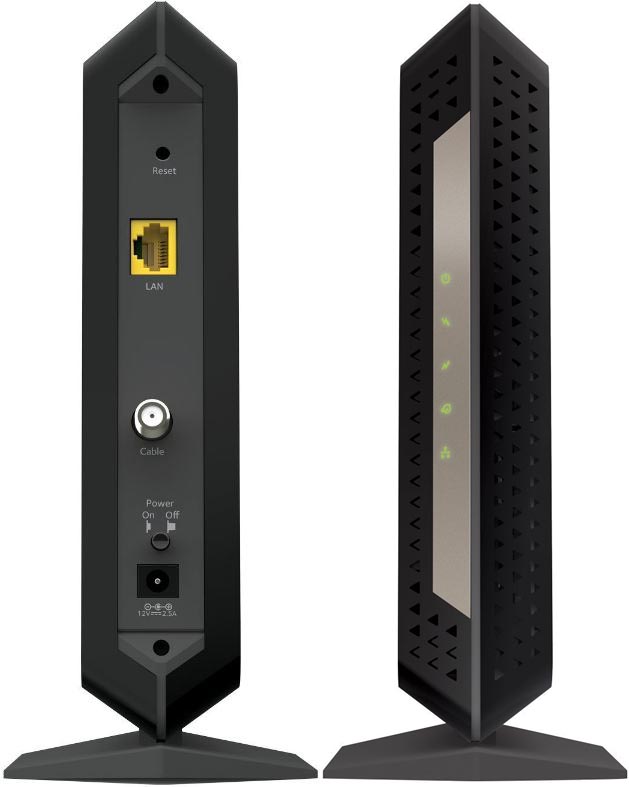
Networking Technology
To understand how this router can improve your internet connection, we first have to learn how cable internet works. Almost all cable providers use a communication protocol for DOCSIS. This stands for Data Over Cable Service Interface Specification. In essence, it’s just a set of rules that explain how modems can talk to each other. Until recently, DOCSIS 3.0 was the latest version of the protocol, supporting higher data speeds and IPV6. Recently, DOCSIS 3.1 has been adopted by internet service providers. This is a small upgrade to the DOCSIS 3.0 standard, providing a few key benefits.
Obviously, the first thing to be upgraded is bandwidth. With DOCSIS 3.1, speeds of up to 10Gbits/s are possible. This is possible because modems can now communicate using 4096 QAM. To understand what this means, let’s imagine that routers communicate using standard language. QAM is, essentially, the total number of words that can be used. If you were using a language that only used, say, 100 different words, it would take you a long time to explain something complex. But with 4000 words, you’d be able to express complex ideas easily.
Another improvement with DOCSIS 3.1 is the channel spacing. By using channels that are 20 to 50Khz wide (instead of 8Mhz used by DOCSIS 3.0) service providers are able to cram a lot more bandwidth into the same old cables they’ve been using for years. Mathematically, this is equivalent to taking a 5 lane highway and turning a 1 lane road into a 120 lane highway. This level of performance looks almost too good to be true, but should clarify exactly how much performance could be gained with this modem.

Real World Performance
Are you actually going to get an internet connection that is 120x faster just by purchasing this modem? Unfortunately, no. The performance gains will be noticeable, but much more modest. Most of the benefits of DOCSIS 3.1 are for the carrier. That being said, the only reason they’ll be able to offer high speed connections is because DOCSIS 3.1 gives them the bandwidth to do so. So if you want a performance increase, you’re going to have to get this modem.
So, what exactly can you expect? In it’s most primitive form, DOCSIS 3.0 gives you 38 Mbps of bandwidth. These high speed modems work by opening multiple connections (or channels) and combining (bonding) them. The CM1000 supports 32 bonded channels, giving you a total downstream bandwidth of 1.2 Gbps. You also get up to 8 upstream channels, allowing you to upload at 304 Mbps.
As of September, Comcast finally announced their DOCSIS 3.1 service. Advertised speeds are 1 Gbps down, and 35 Mbits up. During testing, we were pleasantly surprised at how well this service worked. Most cable customers are used to getting speeds well below what’s advertised. But you’ll notice that Comcast is using a service that is technically capable of 1.2Gbps and selling it as 1Gbps. This is because there is always some noise or cross chatter that reduces your actual bandwidth below the theoretical maximum. We were able to get 964 Mbps down and 41.3 Mbps up with this modem. Obviously, the modem is capable of much faster upload speed. But at the moment, we’re restricted by Comcast’s bandwidth caps.
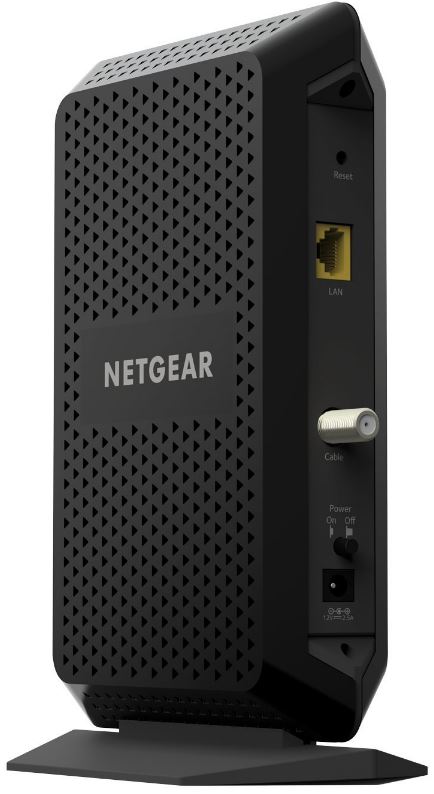
Signal Quality
As with any top tier internet service, 1Gbps Xfinity service isn’t available everywhere. It’s mainly restricted to dense urban areas where the line quality is very high. This is because 1Gbps service is pushing the modem very close to it’s limit. Any degradation in line quality would result in a noticeable performance drop. But this is the very reason why this modem is still a good option even if you have a slower connection.
Imagine that you’ve got a long commute to work every morning. If there is only one road you can take, you might find yourself travelling at a disappointing 5 miles an hour, even if the speed limit is 50. This is what happens when you’ve got tons of clients all struggling to use the same channels. But what if there were 32 other roads you could take? What if those roads were only accessable to special cars that supported them? This is exactly what happens when you use this modem. Even if your area only has 8 or 16 different channels to choose from, most commercial modems only support some of them. Since this one supports the full range of 32 possible channels, you may be able to connect to your ISP on one that isn’t crowded.
Disadvantages
This modem is only so powerful because it uses cutting edge technologies. As with any new technology, it’s going to take some time before DOCSIS 3.1 is available everywhere. If you live way out in a rural community where the top internet speed is 25 Mbps or less, you’ll see zero benefit from upgrading to this modem. In fact, it might be over a year before you’ll be able to see any improvement. This is a purchase that should only be considered if the service is available in your area.
Final Thoughts
If you’re looking to upgrade to Comcast’s new 1Gbps internet service, the Netgear CM1000 is a must have. Yes, Comcast will allow you to rent one for a monthly fee. But you’re going to be paying a lot more for the modem over it’s useful life. If you just purchase one outright, you’ll have the entire thing paid off in only a few months.
This would also be a good upgrade for people who have 50 Mbps+ service and aren’t getting the speed they require. There is more bandwidth available on the DOCSIS 3.1 channels, so you’ll reduce crowding by tapping into a new, high end stream.
Currently, this is the only fully certified modem available for Comcast Xfinity customers. Other ISPs have announced that they will be bringing in DOCSIS 3.1 over the course of the next few months, but you’ll want to call them and confirm compatibility before you make the purchase.
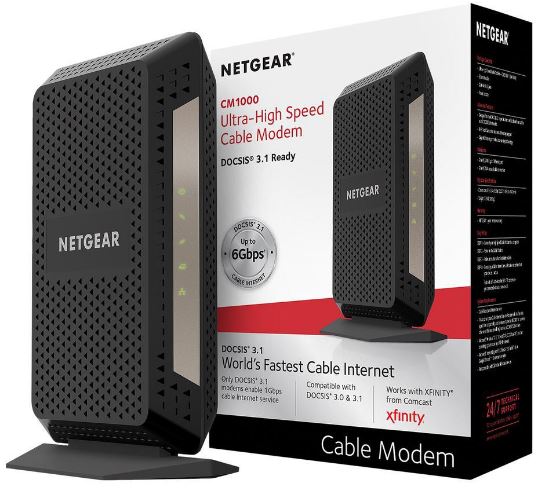
Remember, this modem is just one component in your home network. If you upgrade to a high bandwidth modem and try to shove all that data through an outdated router, you’re not going to get the performance you expect. Consider checking out the Netgear Nighthawk X10 router. It was designed to work with Netgear’s line of high end modems, and will help you push your bandwidth faster than you’ve ever thought possible.
You’ll also want to check and make sure that your computer can handle that much throughput. Most standard SSDs cap out at around 500 megabits per second. Check out our review of the best PCIe SSD drives, as these are some of the few drives on the market that are capable of saving files as fast as your 1 Gbps internet connection can download them.
Meet Ry, “TechGuru,” a 36-year-old technology enthusiast with a deep passion for tech innovations. With extensive experience, he specializes in gaming hardware and software, and has expertise in gadgets, custom PCs, and audio.
Besides writing about tech and reviewing new products, he enjoys traveling, hiking, and photography. Committed to keeping up with the latest industry trends, he aims to guide readers in making informed tech decisions.

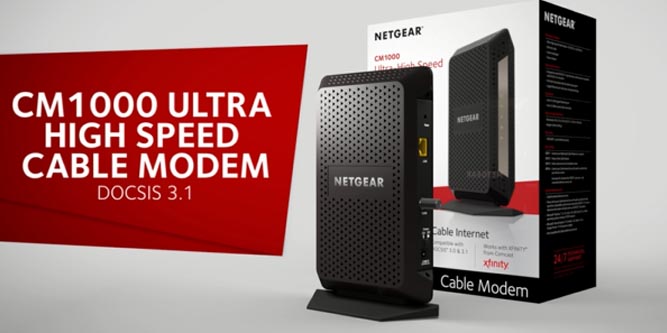
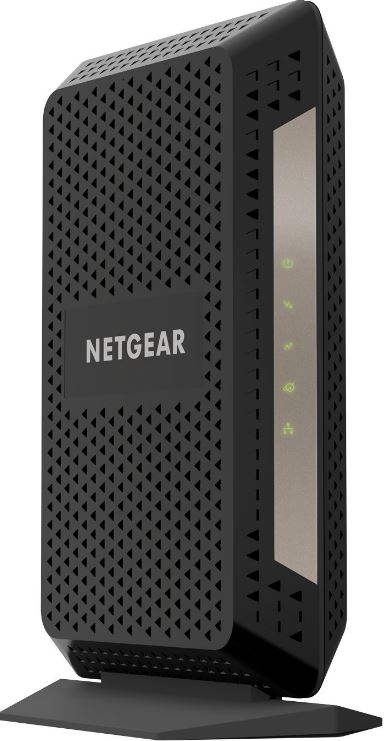
Good article, well detailed and informative. How would you compare this to the Arris SB8200?
It’s March 24,2018. Do think this is still the best 3.1 on the market? I have the newest router by Netgear, the NIGHTHAWK XR500. I’m looking to purchase a netgear cable only modem with 3.1 with ultra high speed capacities. I really don’t want to have a modem with the Intel puma chips 5,6,7 in them. So far I see this as a great prospect.